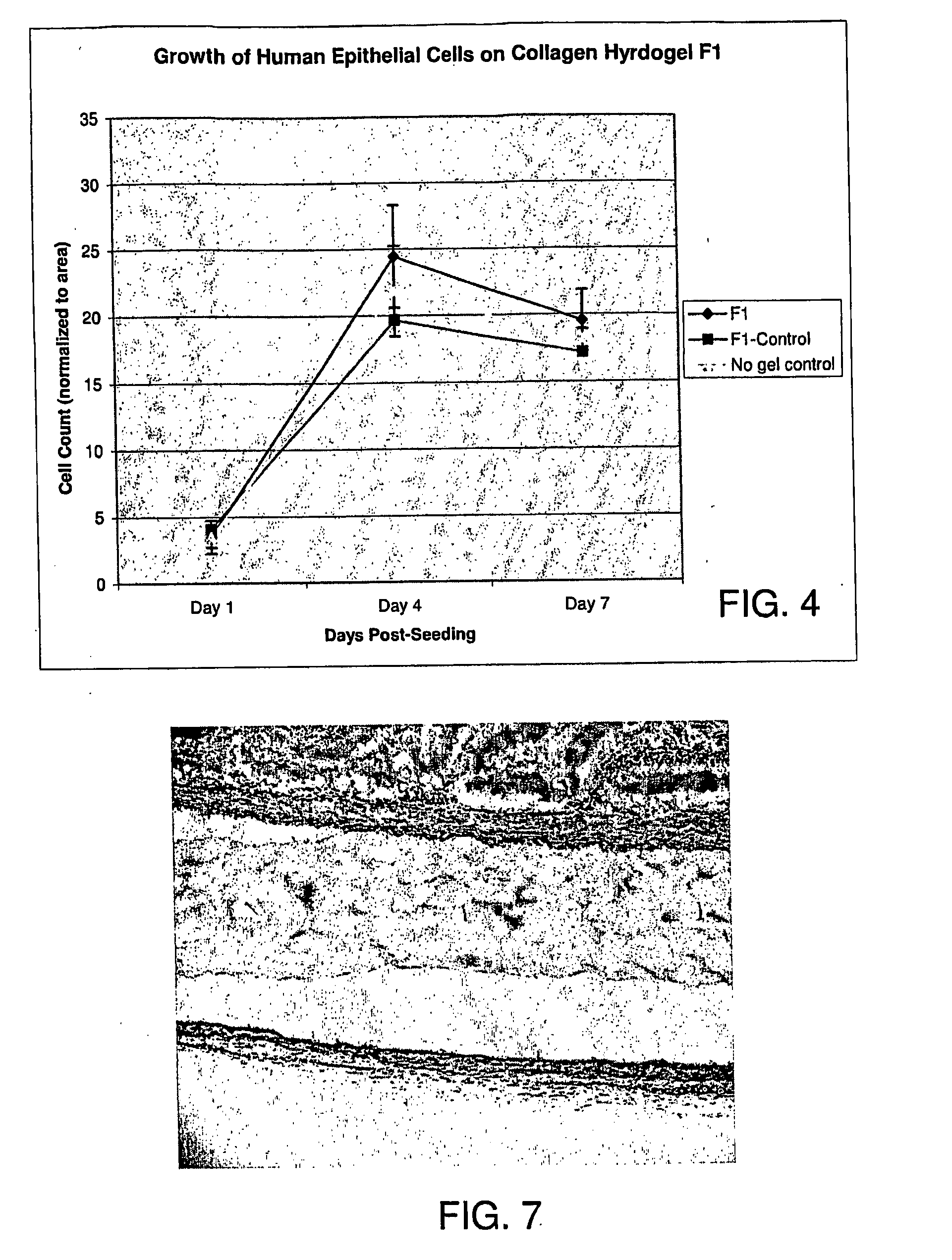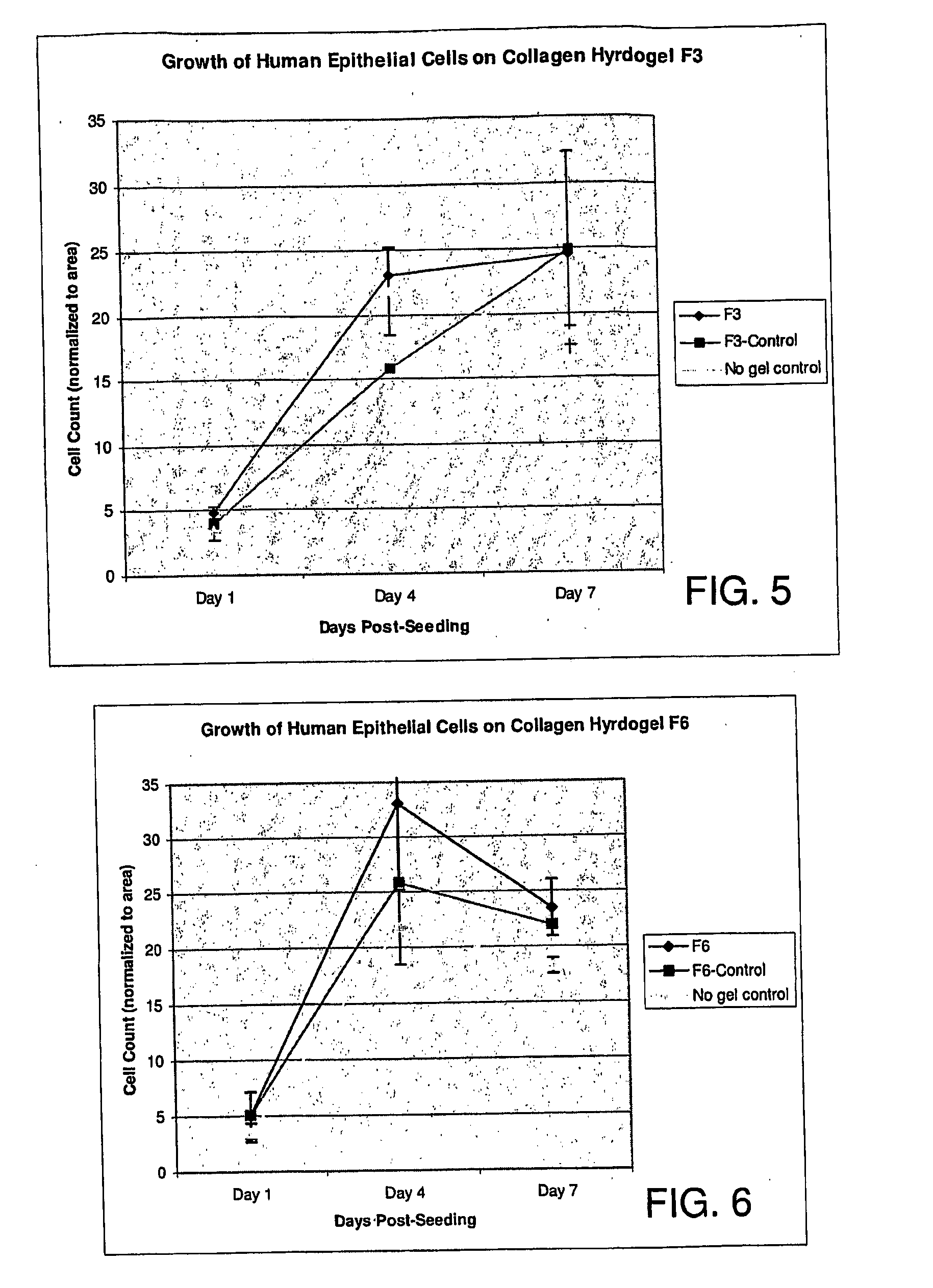Ophthalmic Device and Related Methods and Compositions
a technology of ophthalmic devices and ophthalmic gels, applied in the field of ophthalmic gels, can solve the problems that glutaraldehyde may not be desirable or preferred to use as a cross-linking agent, and achieve the effect of facilitating nerve growth through or over the body
- Summary
- Abstract
- Description
- Claims
- Application Information
AI Technical Summary
Benefits of technology
Problems solved by technology
Method used
Image
Examples
example 1
Preparation of Collagen-Based Corneal Onlays
[0090]Typically, 0.5 mL-2.0 mL of a collagen solution in an aqueous buffer was mixed with 0.01 mL-0.50 mL of a cross-linker agent in the aqueous buffer at about 0° C. without air bubble entrapment. In some compositions, a second biopolymer other than collagen was added to the composition.
[0091]To mix the compositions, syringes containing the compositions were connected to a Tefzel Tee-piece (Uptight Fittings), forming a micro-manifold that allowed thorough mixing of the viscous collagen solution and / or controlled neutralization without surges in pH. A pH surge often led to irreversible fibrillogenesis of the collagen to give opaque matrices.
[0092]More specifically, a first Luer adaptor was used to retain a septum, cut to size to fit tightly into the bottom of the Tee's thread hole. Septa were cut to size from Restek Corporations's, “Ice Blue” 17 mm general purpose 22397 septa. A first syringe with a buffer solution, such as MES (2-[N-morph...
example 3
[0102]An ophthalmic device was made as described in Example 1 using 1-ethyl-3-(3-dimethylaminopropyl)carbodiimide (EDC) with N-hydroxysuccinimide (NHS)+collagens at pH 5.5 in MES buffer, at 0°-4° C. raised to 21° C. for 15 h, then 15 h at 37° C. EDC:NHS=1:1 molar equivalents ratio.
example 4
[0103]An ophthalmic device was made as described in Example 1 using COP+EDC-NHS+collagens at pH 5.5 in MES buffer, at 0°-4° C. raised to 21° C. for 15 h, then 15 h at 37° C. EDC:NHS =1:1 molar equivalents ratio. [COP, copolymer, poly(N-isopropylacrylamide-co-acrylic acid) was prepared by free-radical polymerization of NiPAAm and AAc in 1,4-dioxane with 2,2′-azobis-isobutyronitrile initiator under nitrogen at 70° C.
PUM
| Property | Measurement | Unit |
|---|---|---|
| temperature | aaaaa | aaaaa |
| temperature | aaaaa | aaaaa |
| molecular fluid weight | aaaaa | aaaaa |
Abstract
Description
Claims
Application Information
 Login to View More
Login to View More - R&D
- Intellectual Property
- Life Sciences
- Materials
- Tech Scout
- Unparalleled Data Quality
- Higher Quality Content
- 60% Fewer Hallucinations
Browse by: Latest US Patents, China's latest patents, Technical Efficacy Thesaurus, Application Domain, Technology Topic, Popular Technical Reports.
© 2025 PatSnap. All rights reserved.Legal|Privacy policy|Modern Slavery Act Transparency Statement|Sitemap|About US| Contact US: help@patsnap.com



